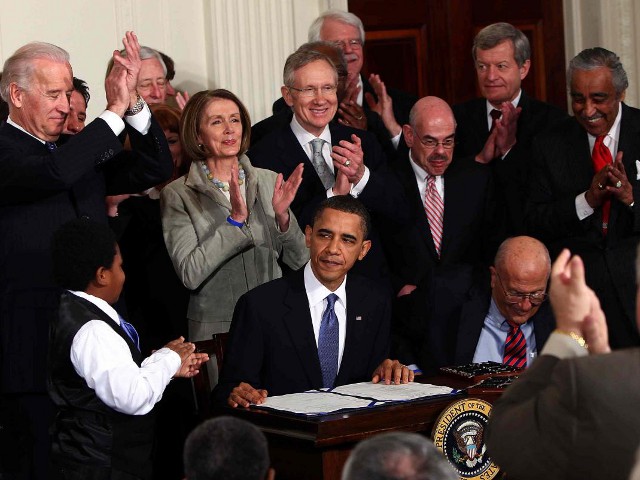Government subsidies, which are crippling the U.S. economy, totaled $1.4 trillion in 2010, and health care and housing led the way. Housing was responsible for $227 billion, 16% of the total, but health care accounted for a whopping $743 billion, which amounted to more than half, 53%.
Education received $129 billion in 2010, through grants to school districts and lower-income college students and tax breaks on college savings. Compared to health, housing and education, the energy sector took a miniscule portion; it only received $35 billion worth of subsidies.
In the housing portion of the subsidies, $460 billion comes from tax breaks such as the mortgage-interest deduction. But in health care, the subsidies encompass Medicaid grants, Medicare and tax-free employer-provided health care.
Medicaid has always been a financial disaster; even the 2010 Actuarial Report on the Financial Outlook for Medicaid for Obama’s Health and Human Services department admits this as well as admitting ObamaCare will expand the number of people eligible and makes things much worse:
“From program inception, the cost of Medicaid has generally increased at a significantly faster pace than the U.S. economy. In 1970, combined Federal and State expenditures for Medicaid represented 0.4 percent of gross domestic product (GDP), but this percentage grew to 0.9 percent in 1980, 1.2 percent in 1990, 2.0 percent in 2000, and 2.7 percent in 2009. As illustrated by the actuarial projections in this report, Medicaid costs will almost certainly continue to increase as a share of GDP in the future under current law.
The Patient Protection and Affordable Care Act, as amended by the Health Care and Education Reconciliation Act of 2010, will substantially reduce the number of people in the U.S. without health insurance. Much of this reduction will occur as a result of expanded eligibility criteria for Medicaid, which we estimate will increase the number of Medicaid enrollees by about 20 million in 2019. Medicaid provides a relatively low-cost way to increase the number of people with health coverage, since its payment rates for health care services and health plans are low compared to other forms of health insurance. Even so, aggregate Medicaid costs will increase significantly as a result of the Affordable Care Act, due to the very large number of additional enrollees starting in 2014.”
Medicaid is already a millstone around the economy’s neck; with Obamacare it will soon be a two-ton boulder.

COMMENTS
Please let us know if you're having issues with commenting.